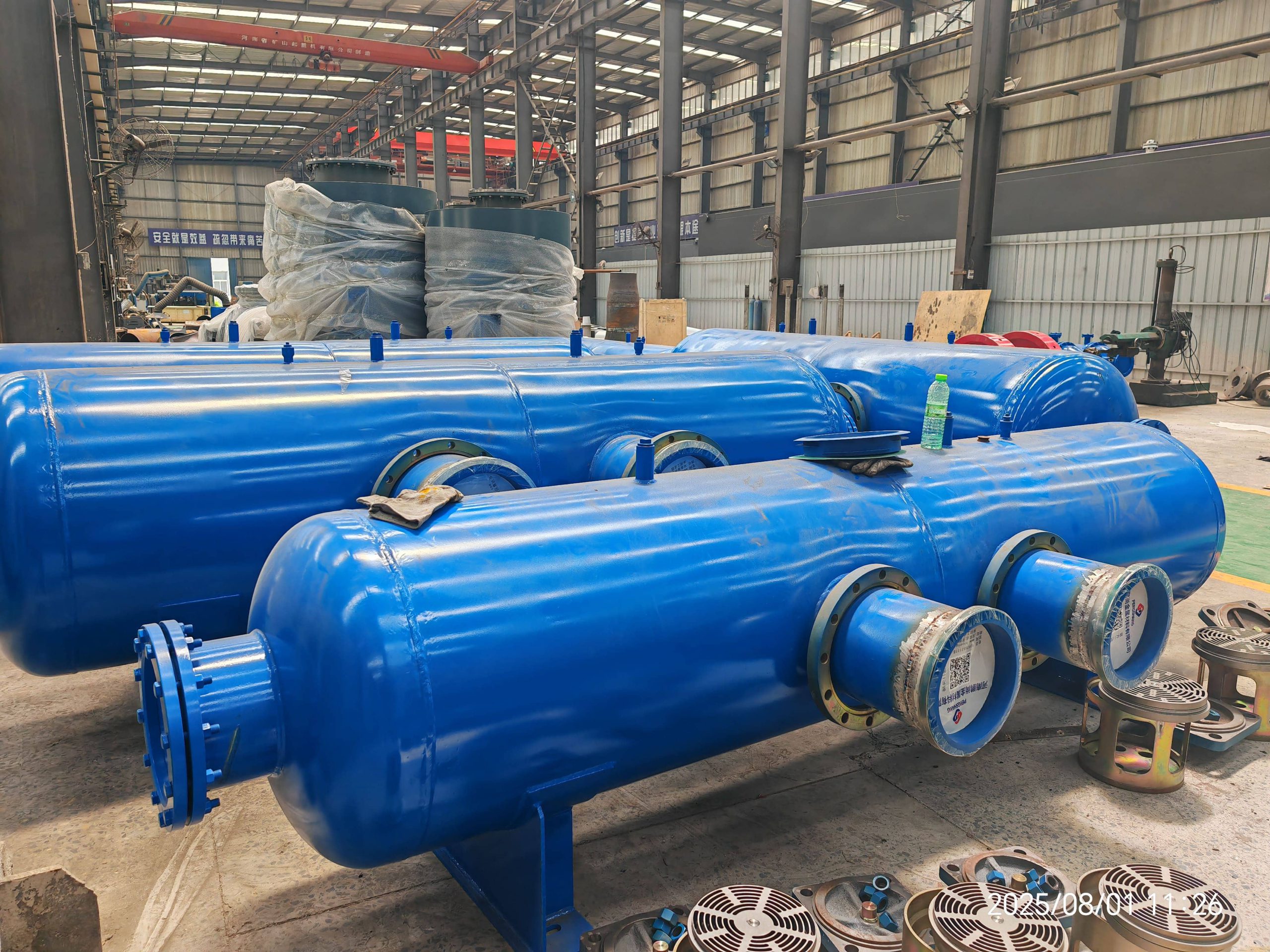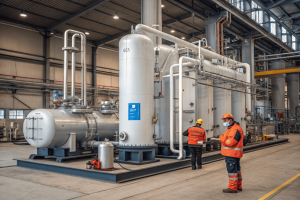What are the disadvantages of post-combustion carbon capture?
•
What are the disadvantages of post-combustion carbon capture?
You need to reduce emissions, but adding a full-scale carbon capture plant seems incredibly complex and expensive. The high energy use and operational costs are major barriers to making a decision.
The main disadvantages are the significant "energy penalty" that reduces the plant's net output, high capital and operational costs, the large physical footprint of the equipment, and the environmental impact of handling and disposing of chemical solvents like amines.
While post-combustion capture is a powerful tool for decarbonizing heavy industry, it’s not a simple add-on. I've walked many project managers and engineers through the planning process, and their initial enthusiasm is often tempered by the sheer scale of the undertaking. It’s like adding a complete chemical processing facility onto your existing power plant or factory. The engineering is fascinating, but the practical and economic challenges are very real. Understanding these drawbacks upfront is the only way to make a realistic assessment of a project's feasibility.
What is the efficiency of CO2 capture?
You hear figures like "90% capture efficiency," which sounds impressive. But this number doesn't tell the whole story. You need to know the net effect on your plant's overall performance.
Capture efficiency, typically 90-95%, is the percentage of CO₂ removed from the flue gas. However, this is offset by an "energy penalty" of 15-25%, which is the amount of the plant's own energy consumed to run the capture process itself.

This is the most critical trade-off I discuss with my clients. Yes, we can capture 90% of your CO₂. But to do that, your power plant might have to burn 20% more fuel to produce the same amount of saleable electricity it did before. The capture system needs a lot of power for its pumps and compressors, and even more thermal energy (steam) to regenerate the chemical solvents. It's a parasitic load, and this reduction in net efficiency directly impacts the plant's bottom line.
The True Cost of Capture
The term "efficiency" can be looked at from two different angles: how well it cleans the gas versus how much it costs the plant in energy.
| Parameter | Power Plant (No Capture) | Power Plant (with 90% Capture) | Impact |
|---|---|---|---|
| Gross Power Output | 500 MW | 500 MW | The plant's generators produce the same power. |
| Capture Plant Energy Use | 0 MW | -100 MW (20% penalty) | A significant portion of power is diverted. |
| Net Power to Grid | 500 MW | 400 MW | A 20% reduction in saleable product. |
As the table shows, the cost is not just in the equipment but in the lost revenue or increased fuel consumption every single day of operation. This energy penalty is the single biggest economic hurdle for post-combustion capture technology.
What are the two main methods to capture carbon dioxide using carbon sequestration?
You've successfully captured the CO₂. Now you have a massive volume of gas that needs to go somewhere. The term "sequestration" is often used, but what are the practical options?
The two main methods are geologic sequestration and biologic sequestration. Geologic involves injecting CO₂ deep underground, while biologic sequestration relies on natural processes like growing trees, which absorb CO₂ from the atmosphere.

This question shifts the focus from "capture" to "storage," which is the final step in the CCS (Carbon Capture and Sequestration) chain. As an equipment engineer, my primary focus is on the capture and utilization (CCU) part of the equation. We help clients turn CO₂ into a valuable product, which avoids many of the long-term challenges and costs associated with sequestration. However, for massive emitters like power plants, sequestration is often the only viable large-scale option, and each method has its own set of challenges.
Storing CO₂: Underground or in Nature
Choosing a storage method depends on local geology, land availability, and long-term strategy.
Geologic Sequestration
This is the most common large-scale method. High-pressure liquid CO₂ is pumped thousands of feet underground into porous rock formations. These are often depleted oil and gas reservoirs or deep saline aquifers, which are formations of salty water. In some cases, the CO₂ can be used for Enhanced Oil Recovery (EOR) to produce more oil, creating a revenue stream to offset costs. Challenges include finding suitable sites, the high cost of injection wells, and the need for decades of monitoring to ensure the CO₂ doesn't leak.
Biologic Sequestration
This method leverages photosynthesis. Afforestation (planting new forests) and reforestation are prime examples. As trees grow, they absorb CO₂ and store the carbon in their biomass. It's a natural process, but it's also slow, requires huge areas of land, and is difficult to measure precisely. The carbon is also less permanently stored; a forest fire, for instance, can release it back into the atmosphere.
What is the PSA for CO2 removal?
You're looking for alternatives to the energy-intensive amine scrubbing process. You hear about solid sorbents and something called PSA. How does this technology work for CO₂ removal?
PSA, or Pressure Swing Adsorption, is a process that separates gases by using a solid material (a sorbent) that captures CO₂ on its surface under high pressure. When the pressure is reduced ("swung" to low), the sorbent releases the captured CO₂.
 System")
I see a lot of interest in PSA, especially for smaller-scale applications or for separating gases that are already at high pressure. Unlike amine scrubbing, it’s a dry, physical process. There are no liquid chemicals to handle. The "swing" in pressure does all the work. For post-combustion flue gas, which is at low pressure, it often requires a vacuum pump for the low-pressure swing, so it’s called Vacuum Swing Adsorption (VSA). While it avoids the use of steam, it still has its own energy demands to run the compressors and vacuum pumps.
The PSA Cycle Explained
The process works by cycling two or more towers filled with the sorbent material. While one tower is capturing CO₂, the other is releasing it.
- Adsorption (High Pressure): The mixed flue gas is compressed and fed into the first tower. The solid sorbent material has a high affinity for CO₂ molecules, so they stick to its surface. The other gases, mostly nitrogen, do not stick and pass through the tower as the clean gas stream.
- Depressurization (Pressure Swing): Once the sorbent in the first tower is saturated with CO₂, the inlet gas stream is switched to the second tower. The pressure in the first tower is then rapidly reduced.
- Desorption (Low Pressure): At low pressure, the sorbent can no longer hold onto the CO₂ molecules, and they are released. This stream of nearly pure CO₂ is then collected and sent to be compressed and purified by a system like ours.
- Re-pressurization: The tower is then brought back up to high pressure, ready to start the cycle again.
This continuous cycling provides a steady flow of both clean gas and captured CO₂.
Conclusion
Post-combustion capture faces major disadvantages, including a high energy penalty, significant costs, and a large physical footprint. These practical challenges must be carefully weighed against the environmental benefits before implementation.
You may also be interested in:

Why is CO₂ recovery technology gaining popularity worldwide?
Why is CO₂ recovery technology gaining popularity worldwide? You see headlines about carbon capture everywhere. But you wonder if it's
Read more
How is a CO₂ recovery system designed to fit different industries?
How is a CO₂ recovery system designed to fit different industries? You're under pressure to implement a CO₂ recovery solution.
Read more
How energy-efficient are today’s CO₂ recovery technologies?
How energy-efficient are today’s CO₂ recovery technologies? You want to recover CO₂, but you fear that high electricity bills will
Read more